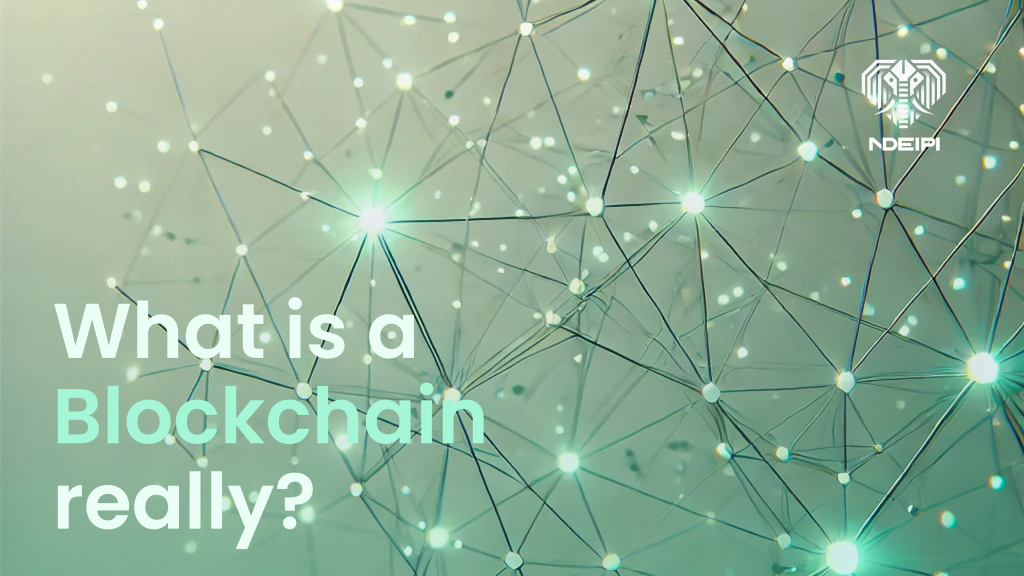
What is a Blockchain? How Does It Work?
Blockchain technology is transforming the way we conduct financial transactions, offering unparalleled security, transparency, and efficiency. But how exactly does it work?
At its core, a blockchain is a decentralized digital ledger that records transactions across multiple computers (or nodes) in a way that ensures transparency, security, and immutability. It eliminates the need for a central authority (like a traditional bank) by allowing transactions to be verified through a network of nodes, ensuring trustless and secure financial interactions.
The Node System: The Backbone of Blockchain
A node is any computer or server that participates in the blockchain network by storing, verifying, or relaying transaction data. These nodes collectively ensure that every transaction is legitimate, secure, and immutable.
There are three key types of nodes in a blockchain network:
- Full Nodes– These nodes store the entire blockchain and participate in transaction validation. They enforce the rules of the blockchain network and ensure that no fraudulent transactions occur.
- Light Nodes (SPV Nodes)– These nodes do not store the full blockchain but only verify block headers. They rely on full nodes to validate transactions efficiently.
- Mining Nodes (Consensus Nodes)– These nodes validate new transactions by solving complex cryptographic puzzles (Proof of Work) or through other consensus mechanisms like Proof of Stake.
Each node in the blockchain has a copy of the entire transaction history, ensuring no single point of failure and providing true decentralization.
How Nodes Enable Seamless and Transparent Transactions
Blockchain nodes work together to maintain a secure and transparent financial system by following these key processes:
1. Transaction Verification & Recording
Whenever a user initiates a transaction (e.g., sending cryptocurrency or digital assets), the transaction is broadcasted to all the nodes in the network. Nodes then verify the transaction based on blockchain rules, such as checking for sufficient funds and preventing double spending.
2. Consensus Mechanism
To add a transaction to the blockchain, nodes must agree that it is valid. This agreement is reached through a consensus mechanism, such as:
- Proof of Work (PoW)– Nodes (miners) solve cryptographic puzzles to confirm transactions.
- Proof of Stake (PoS)– Validators stake their assets as collateral to confirm transactions.
- Delegated Proof of Stake (DPoS)and other variations ensure faster and more efficient consensus.
Once consensus is reached, the transaction is grouped with others into a block.
3. Block Addition & Immutability
After verification, the new block is added to the blockchain in a linear, chronological order. Each block contains a cryptographic hash of the previous block, creating an unchangeable chain of records.
Since each node has a copy of the blockchain, tampering with a transaction would require altering every copy across thousands or millions of nodes, making fraud nearly impossible.
4. Transparency & Security
Every transaction on the blockchain is publicly recorded and time-stamped, ensuring full transparency. Users can verify transactions without relying on intermediaries.
Since transactions are encrypted and stored across multiple nodes, blockchain provides high-level security, preventing unauthorized modifications, hacks, or data loss.
How Blockchain Solves Traditional Banking Problems
Blockchain’s decentralized node system provides seamless, transparent transactions, solving many inefficiencies in traditional banking:
✅ Eliminates Centralized Control
Banks act as middlemen, adding delays and high fees to transactions. Blockchain removes intermediaries, making transactions instantaneous and cost-effective.
✅ Prevents Fraud & Corruption
Traditional banks rely on single points of control, making them vulnerable to hacks and fraud. Blockchain, with its distributed nodes, ensures no single entity can alter transaction data.
✅ Enhances Financial Inclusion
Blockchain allows anyone with internet access to participate in financial transactions, empowering the unbanked population worldwide.
✅ 24/7 Transactions
Unlike banks with limited hours, blockchain transactions occur 24/7, ensuring global accessibility and faster cross-border payments.
✅ Eliminates Hidden Fees
By removing intermediaries, blockchain significantly reduces transaction fees, making payments more affordable.
The Future of Banking with Blockchain
Blockchain’s decentralized node system is revolutionizing finance, creating a trustless, secure, and transparent environment for transactions. As blockchain adoption grows, traditional banking institutions will either adapt or be replaced by faster, more efficient, and cost-effective decentralized financial systems (DeFi).
With blockchain, the power shifts from centralized banks to individuals, ensuring a more open and fair financial ecosystem.
🚀 The future of banking is decentralized! Are you ready? 🚀
Leave a Reply